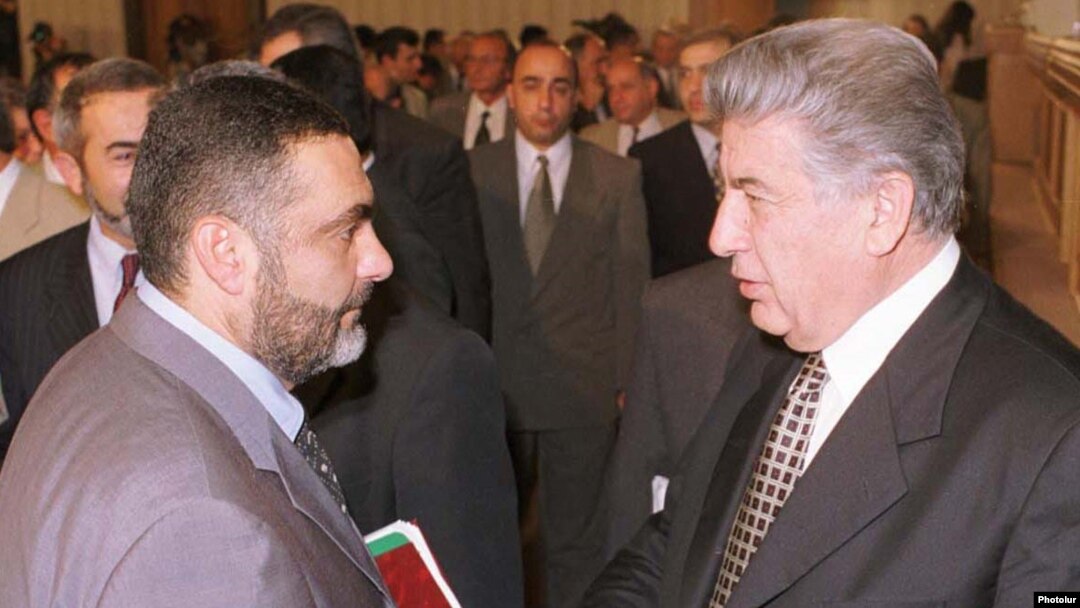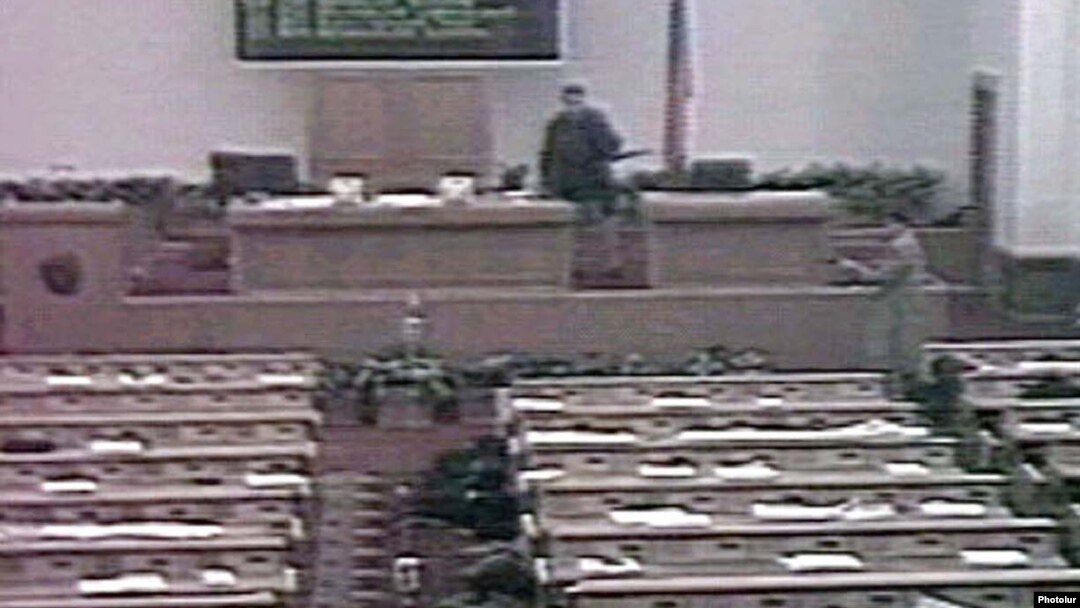A fourth person jailed in connection with a deadly 1999 attack on the Armenian parliament, which plunged the country into a serious political crisis, has died in prison.
The Armenian Justice Ministry said on Friday that, Eduard Grigorian, who was serving a life sentence in Yerevan’s Nubarashen prison, complained of chest pains before being rushed to a nearby hospital and pronounced dead there early in the morning.
Gor Ghlechian, the spokesman for a ministry division managing Armenia’s prisons, told RFE/RL’s Armenian service (Azatutyun.am) that relevant authorities will conduct forensic tests to ascertain the cause of Grigorian’s death.
A doctor by training, Grigorian was one of the five gunmen who burst into the National Assembly and sprayed it with bullets on October 27, 1999. Then Prime Minister Vazgen Sarkisian, parliament speaker Karen Demirchian and six other officials were killed in the shooting spree that thrust Armenia’s government into turmoil.
The gunmen were led by Nairi Hunanian, an obscure former journalist who accused the government of corruption and misrule and called for regime change. They surrendered to police after overnight negotiations with then President Robert Kocharian.
Several other men were also arrested in the following days. One of them, Norayr Yeghiazarian, was charged with supplying weapons to the armed group, which also comprised Hunanian’s younger brother Karen and uncle Vram Galstian.
Yeghiazarian was found dead in pre-trial detention in 2000. Law-enforcement authorities said at the time that Yeghiazarian, an electrician by profession, accidentally electrocuted himself to death while using a heating stove in his cell.
Galstian was found hanged in his Nubarashen prison cell in 2004 just months after an Armenian court sentenced him, the Hunanian brothers and the two other gunmen to life imprisonment. The prison administration claimed that he committed suicide.
Another man, Hamlet Stepanian, was sentenced in December 2003 to 14 years in prison on charges of helping the gunmen enter the parliament. Stepanian suddenly died in prison in 2010 of what officials called a heart attack.

Armenia -- Former Prime Minister Vazgen Sarkisian (L) and parliament speaker Karen Demirchian assassinated in the 1999 attack on parliament.
Those prison deaths fueled more allegations of a high-level cover-up of the parliament shootings. Some relatives and supporters of the assassinated officials still suspect Kocharian and the current President Serzh Sarkisian (no relation to Vazgen), who was Armenia’s national security minister in October 1999, of masterminding the killings to eliminate increasingly powerful rivals.
Hunanian insisted throughout his marathon trial that he himself had decided to seize the parliament and try to topple the government without anybody's orders. But many in Armenia believe that the ringleader and his accomplices had powerful sponsors outside the parliament building.
Ruzan Minasian, a journalist for the “Aravot” daily who covered the parliament attack trial, described Grigorian as the “ideological leader” of Hunanian’s group. She suggested that the former pediatrician, who died on Friday, could have shed more light on the shootings.
“According to the prosecution, Edik Grigorian’s role was the same as Nairi Hunanian’s,” Minasian said. “But he looked more composed. You could probably call him their gray cardinal.”
A Facebook account opened in Eduard Grigorian’s name in 2014 promised major “revelations” regarding the October 1999 attack. It was disabled just as mysteriously shortly after attracting Armenian media attention.
“Maybe he wanted to say something,” Minasian told RFE/RL’s Armenian service (Azatutyun.am). “Or maybe he wanted to test our mood. Why not?”


